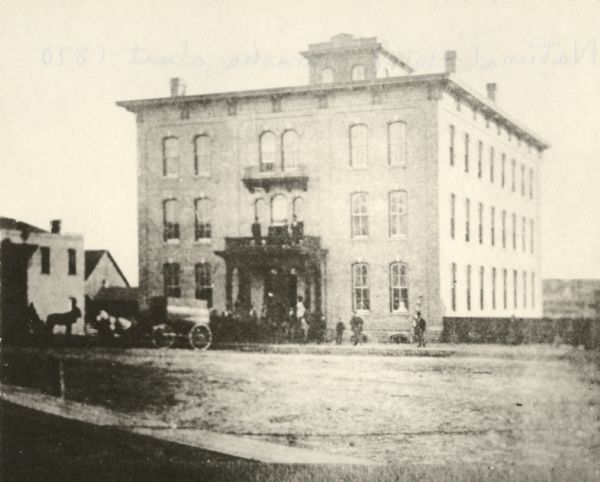From the Semi-Centennial Souvenir Edition of the Menasha Press, June 1898:
In 1895, after ten years of experience as salesman in the hardware business, Mr. Geo. A. Loescher embarked in business for himself, opening a hardware store in the Clovis building on the south side of Upper Main street. His extended acquaintanceship with all the varied details of the business came into good play, for it enabled him not only to buy just the sort of a stock that the wants of the people called for, but to sell at figures that would induce buyers to repeat their visits. Mr. Loescher's venture prospered from the very outset, and today he carries one of the best stocks in the two cities, made up of hardware, tinware, stoves, ranges, sporting goods, mill supplies and bicycle sundries. He also does a large jobbing and contracting business, and employs a force of ten operatives most of the time. This article would not be complete without at least an allusion to the attractive and unique displays Mr. Loescher always has in his show windows. A permanent feature is the large aquarium in the west window in which odd specimens of the finny tribe may be seen at any time. Mr. Loescher was born and reared in this city, being a son of the late Frederick Loescher, Sr., and in 1891 was married to Miss Barbara Landgraf, of this city. Mr. and Mrs. Loescher live in tastefully furnished rooms over the hardware store.
Pictured above, the building at Main and Racine Streets.

























.jpg)
